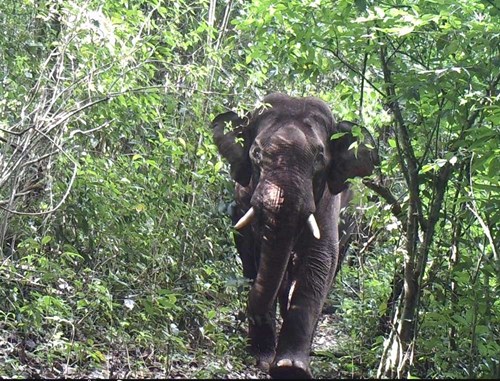World Wildlife Day 2017 - Survey of uncharted Myanmar region finds Southeast Asia’s last great wilderness
03/03/2017 in Conservation

Yangon, Myanmar (3 March) - The Karen Wildlife Conservation Initiative (KWCI), with financial support from the Royal Zoological Society of Scotland (RZSS), WWF and other partners, have conducted six camera traps surveys in the hill forests of Northern Karen State, Myanmar, previously inaccessible to biologists and conservationists for security and political reasons. The surveys found at least 31 mammals including tigers, leopards and Asian Elephants. 17 of the 31 are categorised as Near Threatened, Vulnerable or Endangered on the IUCN Red List.
“It is incredibly rare to find such rich and diverse wildlife anywhere in the world today but certainly in Southeast Asia.” said Clare Campbell, Director of Wildlife Asia, the Australian conservation NGO that coordinates the KWCI. “Thanks to the long-standing conservation efforts of the Karen people this area is a refuge for the last tigers in the region, Asian elephants and so much more.”
“Karen people have intricate knowledge of their forests and wildlife which is directly responsible for the abundant wildlife in this region,” said Saw Sha Bwe Moo, technical field expert for KWCI and lead author of the survey. “However, as the peace process brings rapid economic development to Myanmar we are seeing increased habitat destruction and wildlife poaching that have decimated much of the wilderness in other parts of Southeast Asia. We must act now if we are to protect this last great wilderness.”
According to the FAO Global Forest Resource Assessment, 2015, Myanmar had the world’s third highest annual net loss of forest area between 2010–2015, behind only Brazil and Indonesia.
Poaching in the region, driven by the multi-billion-dollar illegal wildlife trade, is also at critical levels. During the survey, multiple groups of poachers were caught on camera traps.
“The illegal wildlife trade is rapidly emptying Myanmar’s forests and proximity to the infamous Golden Triangle Region makes it particularly vulnerable,” said Nick Cox, WWF-Myanmar Conservation Director. “The illegal wildlife markets in Myanmar’s cities and along all its borders must be closed, and well-trained rangers are needed on the ground if Myanmar is to keep its incredible wildlife.”
The survey was carried out in four areas of Karen State from December 2014-–July 2015. Other important species found included Asiatic golden cat, sun bear, and dhole.
Sarah Robinson, Head of Conservation Programmes and Science at the Royal Zoological Society of Scotland, said:
“We are proud to have been supporting KWCI since its inception, as part of a wider programme of work combatting the illegal wildlife trade. The significant assemblages of species seen in the hill forests of Northern Karen State, Myanmar are a credit to the conservation work of the Karen people and it is imperative that we act now to protect this last great wilderness.
“We hope these research results highlight the clear need to protect this amazing wilderness and encourage support to continue our conservation efforts.”
For full survey see article published in Oryx Journal First structured camera-trap surveys in Karen State, Myanmar, reveal high diversity of globally threatened mammals (*1)
Images are available at the following link: https://www.dropbox.com/sh/ask5ryeixsakjrq/AACjpysLYYSYzigYVXgYz2gia?dl=0
These images are free to use; please credit KWCI.
Camera trap images
-

KWCI camera trap survey - elephant
-

KWCI camera trap survey - Tiger
-

KWCI camera trap survey - Assam macaque
-

KWCI camera trap survey - Asian black bear
-

KWCI camera trap survey - clouded leopard
-

KWCI camera trap survey - guar
-

KWCI camera trap survey - leopards
Featured Articles

An update from the Budongo Forest
19/04/2024 in Conservation

Edinburgh Zoo named best zoo in Scotland
15/04/2024 in Edinburgh Zoo

























Follow EZ